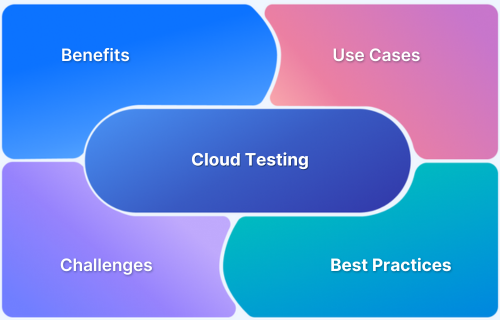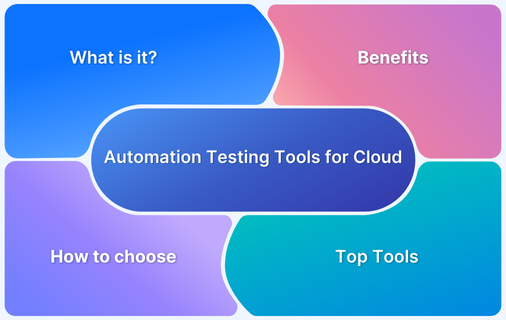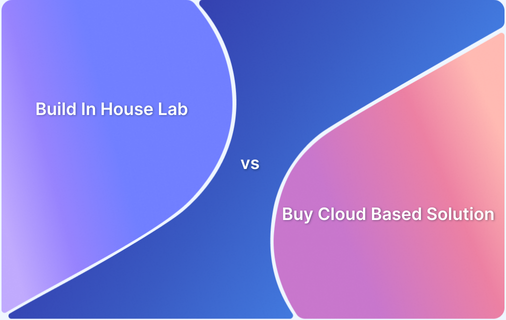Choosing between a private and public cloud depends on your business’s security, scalability, and cost requirements. A private cloud offers greater control, security, and customization but requires more maintenance. A public cloud provides cost-effective scalability with minimal management effort but shares infrastructure with other users.
This article breaks down the key differences to help you determine which cloud strategy best fits your business.
What is a Private Cloud?
A private cloud is a dedicated cloud infrastructure used exclusively by a single organization and can be hosted on-premises or by third-party service providers. With full control over data and infrastructure, private clouds are ideal for businesses with strict security, compliance, and customization needs.
Advantages of Private Cloud
A private cloud provides enhanced security, customization, and compliance and is ideal for organizations with strict requirements. Here are the key benefits of a private cloud.
- Enhanced security: Private clouds provide exclusive access to resources and reduce the risk of data breaches and external threats.
- Customization: Organizations can fully configure the cloud infrastructure to meet their specific performance, storage, or other critical factors requirements.
- Regulatory compliance: Private clouds enable organizations to meet industry regulations such as HIPAA for healthcare or PCI-DSS for payment card data by maintaining full control over data and infrastructure.
- High performance: Dedicated resources ensure critical applications run without interruptions, improving reliability and response time for essential business operations.
Read More: Top 20 Performance Testing Tools
Disadvantages of Private Cloud
While a private cloud offers many benefits, it also has some cons that organizations should consider. These include:
- Cost: Building and maintaining a private cloud involves high upfront and ongoing hardware, software, and maintenance costs.
- Scalability limitations: Scaling a private cloud requires significant capital investment in hardware and resources, which can hinder rapid growth.
- Complexity: Managing a private cloud requires a skilled team with specialized expertise to handle architecture, maintenance, and troubleshooting.
What is a Public Cloud?
A public cloud is a cloud computing model in which resources such as servers, storage, and applications are shared among multiple users or tenants over the Internet. Public clouds offer a pay-as-you-go pricing model that makes them accessible to businesses of all sizes.
Public clouds are ideal for organizations seeking flexibility, scalability, and cost-effectiveness, as they don’t require investing in on-premises infrastructure. They are commonly used for hosting websites, running applications, and managing big data workloads.
Advantages of Public Cloud
The public cloud is cost-effective, scalable, and easy to manage. Here are some reasons why it is good for businesses.
- Cost-effective: Public clouds eliminate the need for capital expenditure on hardware and software
- Scalability: Businesses can scale resources up or down instantly based on demand.
- Automatic updates: Public cloud providers manage software and security updates automatically, reducing the maintenance burden for organizations.
- Disaster recovery: Public cloud platforms offer built-in disaster recovery options to ensure business continuity.
Disadvantages of Public Cloud
Despite its benefits, the public cloud offers less control over infrastructure and may present security or compliance challenges for businesses in regulated industries.
- Limited control: Public clouds limit control over the underlying infrastructure, which can be restrictive for certain business needs.
- Data transfer costs: Moving large amounts of data in and out of the public cloud can incur additional costs.
- Limited customization: Public clouds may not fully meet the specific requirements of certain businesses
Differences Between Private Cloud and Public Cloud
Private and public clouds differ significantly in areas such as cost, control, scalability, security, and ownership. Here’s a comparison of core differences between private and public clouds.
| Feature | Private Cloud | Public Cloud |
|---|---|---|
| Ownership | The organization owns the infrastructure | Cloud provider owns and maintains the infrastructure |
| Cost | Higher upfront costs due to infrastructure setup | Lower costs with a pay-as-you-go pricing model |
| Control | Full control over infrastructure and data | Limited control, managed by the cloud provider |
| Scalability | Limited scalability, based on available resources | Highly scalable with instant resource adjustments |
| Security | Enhanced security with dedicated resources | Shared security responsibility with the provider |
| Customization | Fully customizable to meet specific needs | Less customizable, more standardized |
| Compliance | Easier to meet regulatory requirements | May require additional compliance measures |
Similarities Between Public Cloud and Private Cloud
Although private and public clouds are different, they have some similarities.
- Virtualization: Virtual machines and containerization distribute workloads efficiently and maximize resource utilization.
Read More: What is Data Virtualization
- Cloud services for business needs: Both models offer IaaS, PaaS, and SaaS to support application development deployment and management.
- Lower infrastructure costs: Cloud environments reduce reliance on physical hardware and minimize maintenance expenses.
- Reliability and disaster recovery: Redundant systems and failover mechanisms in private and public clouds help prevent downtime and ensure business continuity.
- Flexible resource management: Both cloud models support workload balancing and resource optimization based on usage patterns.
- Automation for operational efficiency: Automated provisioning and management tools simplify cloud operations and reduce manual intervention.
Read More: 20 Best Automation Testing Tools for Cloud
Public Cloud vs. Private Cloud: What Should You Choose?
When comparing private and public clouds, consider factors like security, cost, scalability, and ownership to determine which is best for your business.
A private cloud offers greater control, security, and customization, making it ideal for businesses with stringent compliance requirements or sensitive data. In contrast, a public cloud is cost-effective and scalable, perfect for companies with fluctuating demands.
However, both cloud models offer cost savings by eliminating the need to maintain physical infrastructure.
Developers and QA teams worldwide use BrowserStack, a cloud-based platform, to test on the cloud and reduce costs. With BrowserStack, you can test on 3500+ real devices and browser combinations without investing in or managing your own device pool.
Since you’ll be testing on real devices, not emulators, you can see how device-specific features and network conditions impact your website or application’s performance.
Conclusion
The choice between private and public clouds depends on your business’s priorities. Private clouds offer more control and customization options, while public clouds are known for their flexibility and cost savings. The key is aligning your cloud strategy with your business goals to balance security, performance, and efficiency.
Regardless of the cloud model you choose, always test your applications on real devices to ensure they work correctly across different hardware and software configurations. BrowserStack offers a real device cloud to test applications under real-world conditions and understand how network and latency impact user experience.
Frequently Asked Questions
1. What are public cloud deployments?
Public cloud deployments refer to using cloud resources provided by third-party vendors, such as servers, storage, and applications, delivered over the Internet. These resources are shared among multiple tenants, making them cost-effective and scalable.
2. What are private cloud deployments?
Private cloud deployments involve using cloud infrastructure dedicated to a single organization. This infrastructure can be hosted on-premises or by a third-party provider and offers enhanced security, control, and customization.
3. Can you use both the public cloud and the private cloud?
Yes, organizations can use both public and private clouds in a hybrid cloud model. This approach allows businesses to leverage the benefits of both models, using private clouds for sensitive workloads and public clouds for less critical applications.
4. Can you run a private cloud in the public cloud?
Yes, private cloud environments can be deployed within public cloud infrastructure using virtualization and isolation techniques. This approach is often called a virtual private cloud (VPC).
5. Is a public cloud more cost-effective than a private cloud?
Public clouds are generally more cost-effective due to their pay-as-you-go pricing model and lack of capital expenditure. However, private clouds may provide better value for organizations with consistent workloads and strict security requirements.
6. Is it possible to have private data in a public cloud?
Yes, private data can be securely stored in public clouds using encryption, access controls, and other security measures. Many public cloud providers comply with stringent regulatory standards to protect sensitive data.
7. Is a private cloud cheaper than a public cloud?
Private clouds are generally more expensive due to upfront infrastructure and ongoing operational expenses. However, they may provide better value over time for predictable workloads.







